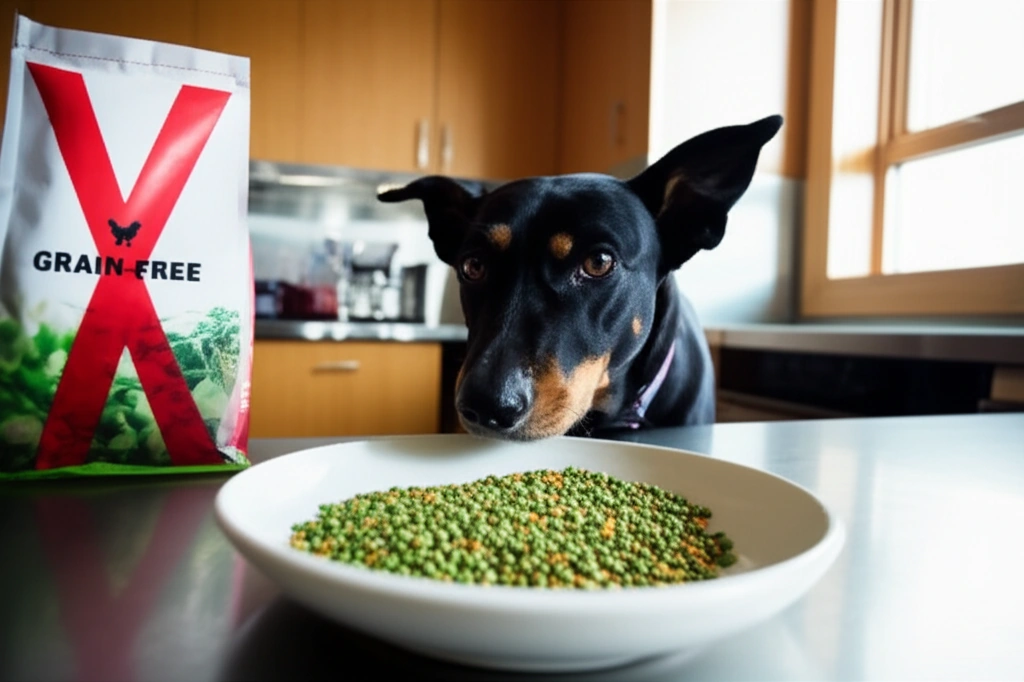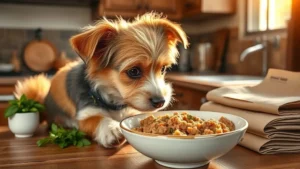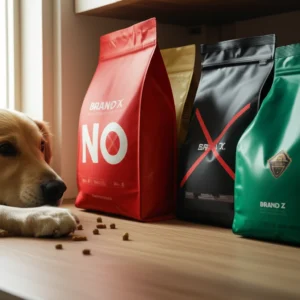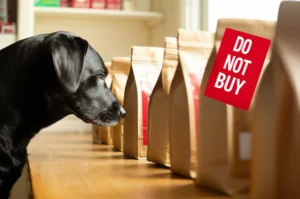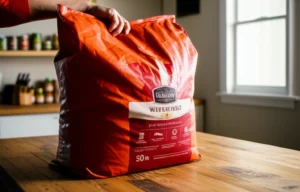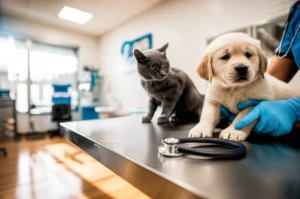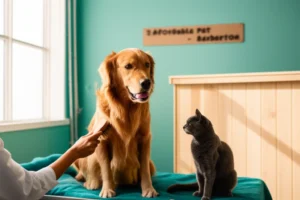So, you’ve probably heard the buzz about grain-free dog food and its dark side, right? Maybe you came across headlines linking some grain-free dog food brands to serious heart issues in dogs, especially something called dilated cardiomyopathy (DCM). It’s confusing—and honestly, a bit scary when you just want your furry friend to be healthy and happy.
Let’s cut through the noise. There are indeed some grain-free dog food brands you should be cautious about, primarily because they tend to have too many peas, lentils, or potatoes—ingredients that research and the FDA have flagged over the years as potentially problematic for our pups. But it’s not about throwing the baby out with the bathwater. Grain-free isn’t inherently “bad” for every dog, but some formulas and brands just don’t hit the mark when it comes to balanced nutrition. Keep reading, because knowing which options to avoid—and why—can make all the difference for your dog’s health.
Why We’re Talking About Grain-Free Dog Food
What’s Driving Your Search
If you’re here, chances are you want to avoid making a diet mistake that could risk your dog’s health. Maybe you’ve heard from friends, vets, or even your own gut instinct that some grain-free options might do more harm than good. You want a clear, simple answer: which grain-free dog food brands to avoid, and what to feed instead.
Who Should Read This
If your dog currently eats grain-free, or if you’re eyeing those trendy grain-free bags in the store, this guide is for you. Especially if you have a breed susceptible to heart issues—or if you just want to make the safest choice possible. This isn’t about fear-mongering, just honest information to help you protect your pup.
How This Helps You
We’ll walk you through the recent FDA findings, break down red-flag ingredients, highlight some brands linked to health issues, and steer you toward safer, vet-approved alternatives. Plus, I’ll share real stories and practical tips so you’re confident in your next dog food decision. If you want a deeper dive into good and bad brands in general, check out these best and worst dog food brands and the top 20 worst dog foods list.
What’s Up With Grain-Free—The Safety Concerns
FDA and Heart Disease Investigations
The story really picked up steam in 2018, when the FDA started looking into a spike in reports about dogs developing dilated cardiomyopathy (DCM)—a serious heart condition where the heart muscle weakens and the dog can suffer heart failure. What caught their eye? Many of these dogs were eating grain-free diets packed with ingredients like peas, lentils, and potatoes.
This wasn’t just happening to breeds normally prone to DCM, like Dobermans and Great Danes, but to breeds never known for it, such as Golden Retrievers and Labradors. The FDA named some brands linked to these cases, including popular grain-free options like Acana, Zignature, Taste of the Wild, and Blue Buffalo.
Understanding DCM and Its Connection
DCM leads to an enlarged and weakened heart that can’t pump blood efficiently. Symptoms might be subtle at first—lethargy, coughing, or fainting. In many cases, experts suspect the diet could cause or contribute to taurine deficiency, an amino acid important for heart function. But it’s complicated. Not all grain-free foods cause DCM, and not all dogs on grain-free diets develop heart issues.
The Nuance Experts Stress
Experts agree the issue isn’t simply “grain-free = bad.” It’s more about what replaces grains—like an over-reliance on peas and other legumes—and whether the overall nutrition is balanced. The FDA and veterinarians continue investigating, encouraging owners to consult vets rather than panic. So, yes, caution is warranted, but context is king here.
Spotting Grain-Free Formulas and Ingredients To Avoid
Ingredients to Watch Like a Hawk
- Peas (especially pea protein or pea fiber)
- Lentils and other legumes (chickpeas, beans)
- Potatoes and potato proteins
These ingredients often appear high up in the ingredient list, meaning they’re major carbohydrate or protein sources, sometimes crowding out more traditional, tested ingredients. Too much pea or lentil can interfere with nutrient absorption and amino acid balance—potentially leading to taurine deficiency.
Formulation and Marketing Red Flags
Watch out for single-protein exotic meats with limited nutritional research backing, or products boasting “holistic” or “natural” without transparent, detailed ingredient sourcing. Claims like “premium” or “veterinarian approved” can sometimes just be marketing fluff. The real test? Ingredients you recognize and balanced nutritional profiles.
How To Read Ingredient Lists Like a Pro
If you see peas, lentils, or potatoes listed within the first 5-10 ingredients, be cautious. Sometimes “meat meal” or “animal meal” replaces clear protein sources, and fillers like corn or soy sneak in under vague names. If that sounds messy, that’s because it often is!
Grain-Free Dog Food Brands To Avoid: The Names You’ll Hear
Brands Often Mentioned in Reports
The FDA identified 16 brands linked to DCM cases, including some big names that pet owners trust. The key ones to keep an eye on (with reported cases) are:
| Brand | Notes |
|---|---|
| Acana | Often pea-heavy formulas |
| Zignature | Legume-rich options |
| Taste of the Wild | Popular grain-free, multiple formulations |
| Blue Buffalo | Some grain-free lines reported |
| Orijen | High protein but lots of legumes |
| Fromm | Grain-free varieties in question |
| Merrick | Grain-free, pea-based recipes |
That said, a reported case isn’t a proof of guilt. Many brands reformulated their recipes since these findings, and some types of food (dry kibble) seem more commonly involved than wet or raw foods. It’s more about vigilance than fear.
How to Read Brand Lists Sensibly
Brand warnings can create panic, but they’re merely signals to dig deeper, not a definite “avoid” stamp. Ingredient transparency, recall history, and vet recommendations should guide your decisions more than just a name on a list.
Quick Checklist Before You Switch Brands
- Confirm what formula your dog’s eating (some brands have both grain-free and grain-inclusive lines)
- Look closely at ingredient order for peas, legumes, potatoes
- Check for recalls or repeated quality issues
- Talk to your vet about taurine testing if concerned
Making Safer Dog Food Choices Now
What’s A Balanced, Vet-Approved Diet Look Like?
You want diverse, wholesome ingredients with a good balance of proteins, fats, and carbs. Grains like rice, oats, or barley aren’t villains—they’re often a healthy, well-studied energy source. Look for foods backed by AAFCO feeding trials, or developed with veterinary nutritionists involved.
Brands Commonly Recommended by Vets
Veterinarians often suggest these trusted brands, known for consistency, quality control, and good nutritional standards (including grain-inclusive options):
- Royal Canin (yes, they have grain-free and grain-inclusive formulas)
- Hill’s Science Diet
- Purina Pro Plan
- Eukanuba
- Iams
Transitioning towards these brands—or at least consulting your vet about them—could be a great way to ease worries if you’re currently feeding grain-free food linked to concerns.
Tips for Switching Diets Without Drama
Switch your dog’s food gradually over at least 7 to 10 days—mix increasing amounts of the new food with the old. Watch for any changes in stool, energy, or appetite. If you see anything worrying, don’t hesitate to check with your vet promptly.
Watch, Test, and Monitor
If your dog ate grain-free food for a while, especially one with those flagged ingredients, ask your vet about a cardiac checkup and taurine testing. Early detection is key. The good news? Some heart conditions related to diet can improve or even reverse with diet changes.
Stories From The Trenches: Real-Life Experience Matters
A Heartwarming Recovery Story
I remember a client who brought her golden retriever in after months of unexplained lethargy and coughing. Turns out, the dog had been fed mainly a grain-free diet heavy on peas. After switching to a vet-recommended grain-inclusive food and supplementing taurine, the dog’s heart function improved dramatically over several months. These stories remind me how crucial diet is—and how timely changes can save lives.
Switching For Peace of Mind
Another pup owner told me how she switched from a boutique grain-free brand to Royal Canin after a vet’s warning. Not only did her dog’s digestion improve, but she also felt way less anxious about what was in the food. Sometimes, peace of mind is as valuable as nutrition itself.
Voices of the Experts
Veterinary cardiologists and nutritionists consistently stress the importance of balanced ingredients, transparency, and evidence-based formulas. Their caution about grain-free diets especially those crowded with legumes isn’t fear—it’s a call for due diligence.
Taking Action: What You Can Do Today
Look at your dog’s current food. Is it grain-free? If yes, grab the bag and check the first 10 ingredients. Do you see lots of peas, lentils, or potatoes? Time for a conversation with your vet.
Don’t feel overwhelmed or guilty. You’re reading up, you care, and that’s already a big step. Every dog is different. Some thrive on grain-free, many don’t. It’s about finding what truly works for your furry companion.
And remember, besides nutrition, lots of love and regular vet check-ups make all the difference!
If you want more insights on safe, trustworthy dog foods, you might find this guide on the best and worst dog food brands helpful. Also, here’s an eye-opening top 20 worst dog foods list that points out some common pitfalls in popular brands.
Wrapping Up: Your Dog Deserves the Best
Feeding your dog the right food can feel like navigating a maze, especially with all the conflicting info out there. But here’s the bottom line: avoid grain-free dog food brands that rely heavily on peas, lentils, and potatoes, as these have been linked to heart problems in dogs. Instead, lean towards balanced, vet-approved brands that include grains and have transparent, reliable ingredients.
Remember, no one knows your dog quite like you—and that gut feeling paired with good information and veterinary guidance will lead you to the best choice. So, what’s your dog eating these days? Have you noticed any changes or concerns? Just remember, you’re not alone on this journey—and every step you take towards informed choices helps your dog live a happier, healthier life.
If you want to keep learning and get more in-depth information about dog food brands — both the good and the not-so-good — you’ll find these resources super useful: best and worst dog food brands and top 20 worst dog foods list.
Here’s to happy tails and healthy hearts!

